When Singapore entered the ‘circuit breaker’ period, survival became a serious concern for many businesses.
Stringent measures like closing non-essential workplaces and a dine-in ban at eateries meant footfall was significantly cut—exactly what we need to curb the spread of the virus, but not exactly great for businesses.
But aid for F&B owners arrived quickly. As the government highlighted through their Enterprise Singapore Food Delivery Booster Package, the solution is to help eateries go digital.
For example, Enterprise Singapore is funding 5 percent of commissions charged by food delivery platforms, and 20 percent of delivery costs charged by third party logistics providers.
The COVID-19 situation shows that having digital capabilities must become the norm.
For some businesses, the pandemic may become an opportunity to take the first step towards digitalizing. It could tide them through current challenges and even make them stronger once this crisis is over.
However, an optimistic outcome is not going to be true for all. While it’s ideal that going online should save livelihoods, we must also address the reality that it’s not a one-size-fits-all solution.
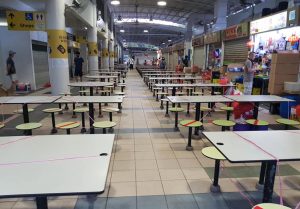
Elderly Hawkers Face The Biggest Barrier
One group that will obviously have a hard time adapting is the older business owners.
For a large proportion of elderly hawkers, the traditional recipe for running a successful stall is putting in hard work daily to cook good food.
To them, it’s an understatement that technology is a steep learning curve. It can be so daunting that it deters them altogether.
Ng Bee Choon, a hawker in her 60s whom we spoke to, shared that she has never considered taking online orders.
We learned, in fact, that she doesn’t know how food delivery services work, nor is she aware that the Government is subsidizing platform fees.
For her, the struggle is not just with digital literacy, but also a language barrier to top that.
She shares with us in Mandarin:
“These companies usually write about their services in English. Besides the younger hawkers, many of us in our 50s to 60s were Chinese-educated and we are not fluent in English,” she said. “To engage with these platforms in English would be very hard for us.”
While some senior hawkers do manage to incorporate technology into their businesses, they are but a handful.
Many others are still fully reliant on their brick-and-mortar stalls with no form of online presence like a website, Facebook page or even an official location on Google Maps.
They may never be exposed to the benefits of digital services such as food delivery unless someone approaches them personally.
Although some providers like WhyQ are making such efforts to reach out to hawkers one by one, it remains a matter of luck for the hawkers.
Short End Of The Stick For Local Kopi Stalls
Bee Choon also faces another limitation as she runs a drink stall.
“All the while, I have never noticed any food delivery platforms come over and reach out to drink stalls like mine,” she says.
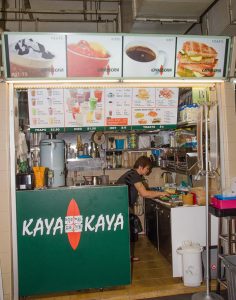
For the most part, we don’t usually find drink stalls online. Of course, this is not counting beverage chains like Toast Box, Starbucks or bubble tea brands. Eateries that sell mostly food with drinks on the side also have no problem.
The difference is that local kopi stalls rely almost entirely on drinks, which they can only price at around 80 cents to $2.50. With such small value orders, it’s simply not worth offering delivery.
Furthermore, the takeaway packaging they normally use is not suitable for delivery, and spending more to upgrade it is not affordable when business is already poor.
After making only $30 over six hours on the first day of the circuit breaker, Bee Choon has decided to close her stall for the time being.
“It’s not even enough to pay for the water and electrical bills. We would be operating at a loss. If I go and open my stall every day I will just be waiting around in vain.”
While she declines to share how much she expects to lose from closing the stall, she says it will be significant.
Ambience And Experiences Cannot Be Transferred Online
On the opposite end from hawkers, some restaurants face difficulties going online because they cannot offer the same dining experiences that drew customers to their physical outlets.
Alan Lee, who previously founded Banquet food court, now runs a bicycle-themed café called Two Wheels Good outside Jurong Point.
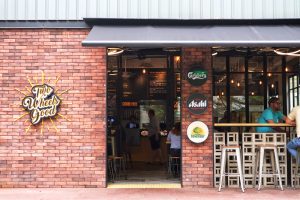
His café was created to be a comfortable hangout spot, and live music performances were one of the reasons crowds would come.
“When the circuit breaker started, our sales dropped by 95 percent immediately,” he says.
Needless to say, ambience and experiences are even more crucial for fine dining restaurants.
Rishi Naleendra has had to temporarily close his two fine dining restaurants, Cloudstreet and Cheek Bistro, until the dine-in ban is lifted.
At Cloudstreet, the full two-hour experience encompasses seven courses, five snacks, wine pairings, plating, and service.
“You can’t put that in a takeaway box and send it out,” says Rishi.
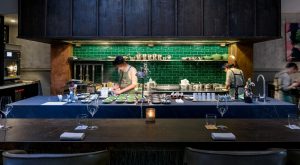
Even if he attempted to deliver, consumers are cutting back on their spending amidst this economic uncertainty, and indulging would be the last thing on people’s minds.
Rishi is also prepared that more conservative spending will continue to impact his business beyond the circuit breaker.
“Most of the workforce would have suffered in some way, be it pay cuts or loss of jobs,” Rishi said. “Probably 50 percent of our customers came from business entertainment and international guests, but it will be some time before they start taking anyone out to eat again.”
However, Rishi was at least able to pivot quickly—he was going to open a third restaurant selling casual Sri Lankan cuisine, but had put off the opening due to the circuit breaker.
For the time being, he now cooks Sri Lankan food in Cloudstreet’s kitchen and offers take-away and delivery through the online ordering platform Oddle.
But still, it only makes about “40 to 45 percent of the revenue needed to keep [his] businesses alive”.
“Cash flow is my main worry. I don’t know if I will still have a restaurant by the end of this year,” he says.
Struggling To Sustain High Delivery Costs With Low Orders
Even when businesses tap on online sales, it isn’t guaranteed to help them increase orders.
Despite using food delivery platforms, third party delivery riders, and joining Facebook groups like Hawkers United to advertise his food, Kevin’s fish soup eatery Fu Ji only gets “two or three more orders a day” from this.
“Some days we might get zero delivery orders,” he adds.
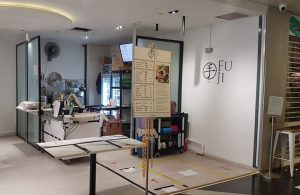
On top of that, it’s a combination of low orders and costly platform fees that make it a poor trade-off for F&B owners.
After facing backlash, Grab recently stepped out to explain that it only keeps about 5 percent of the commission charged, and uses the rest to pay delivery riders an incentive.
While it’s good to understand the breakdown, to F&B owners, it’s still a big price for them to pay regardless.
“We are charged 33 percent (28 percent after subsidies) by GrabFood and Deliveroo, which is pretty much all or more our profit margin,” says Kevin.
Alan has also tried food delivery apps and third party delivery senders when business was strong before the coronavirus outbreak.
“After looking at the delivery sales, it was not enough—an average of about $150 a day from delivery orders (before COVID-19) cannot sustain us to hire riders,” he says.
Two Wheels Good earns a margin of about 10 per cent, but delivery platform fees only go as low as 25 per cent.
“In other words, the more we sell, the more we will lose [if we rely on online food delivery],” said Lee. “So instead, we decided to close the shop and take this period to do maintenance works so that we will be ready when the circuit breaker is lifted.”
What Will Happen To These Businesses Left Behind?
As much as possible, F&B businesses are doing their best to keep going against the odds. However, for some businesses that can’t tap on online sales, the only thing left is close their shutters until the dine-in ban is lifted.
Many will be counting down to the end of the circuit breaker in hopes that they will have enough sales or savings to stay afloat till things go back to normal.
The recent extension of the circuit breaker until June 1 also brings more uncertainty for them, as it could mean that the end date may be prolonged again if the coronavirus situation does not improve.
Like the rest of the country, they’re waiting day by day to find out what will happen next.
Unfortunately, going online can’t save everyone. Hopefully these hawkers and restaurants can pull through, but eventually, we have to expect some fallout.
This story was originally published in Vulcan Post.
